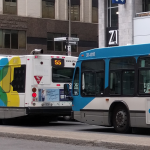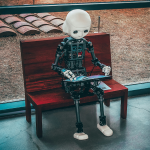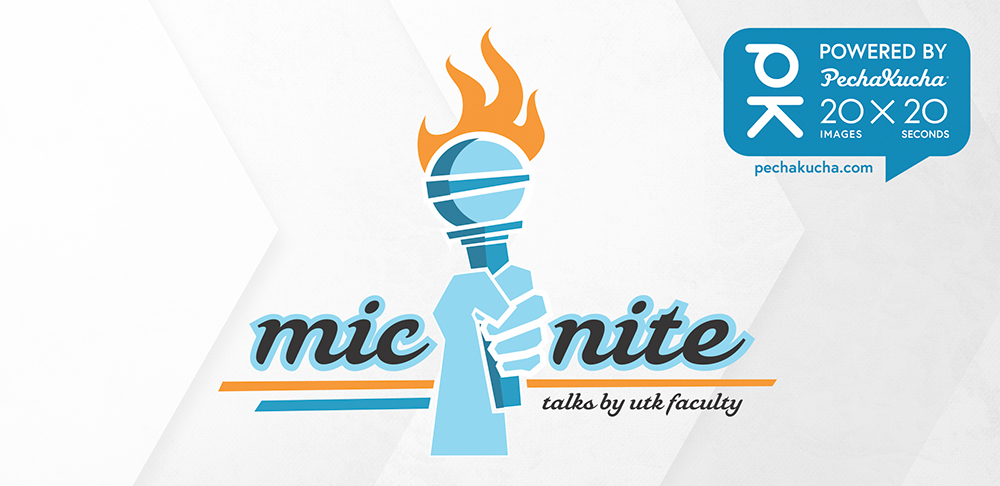Next Event:
Wed, April 3, 2024
Social Hour: 5:30pm Program: 6:10pm
Location: Relix Variety Theatre
Contact:
Patrick Grzanka,Mic/Nite Coordinator
Email: pgrzanka@utk.edu
Twice a year, the Office of the Provost hosts Mic/Nite, a “Pecha-Kucha Powered” social gathering designed to enhance the intellectual, interdisciplinary, and cultural life of the faculty and staff at UT Knoxville.
One of the challenges in a large university community is working across the silos that often separate disciplines. Mic/Nite offers an opportunity to build bridges and foster a deeper appreciation of the many facets of a large, comprehensive university. Presentations offer a cross section of the intellectual life of UT Knoxville and provide an opportunity for social interaction among faculty and staff who may not otherwise have the opportunity to interact with each other.
For the Event:
We remind our guests that UT Mic/Nite is an event for UT faculty and staff and is not open to students or the general public. [Partners are welcome.] Relix Variety Theatre is located at 1208 N Central St, Knoxville, TN 37917. Parking is available behind the venue on Anderson Avenue and on surrounding streets.
Free pizza and a cash bar are available.
What is Pecha-Kucha?
Pecha-Kucha is a simple presentation format that features twenty images displayed for twenty seconds each. The images automatically forward as the presenter talks. To learn more, visit the Pecha-Kucha FAQ. Samples are posted on the Pecha-Kucha Presentations page.
The format originated in Tokyo, Japan. It was first introduced in 2003 and has spread to more than 400 cities around the world. The format allows presenters to depict and describe everything from urban design or economic theory to a series of photographs. Mic/Nite is held in cooperation with PechaKucha Night Knoxville, which was started in 2011 to encourage intellectual and cultural dialogue. Mic/Nites are special interdisciplinary events that facilitate dialogue between university faculty and staff by showcasing the academic pursuits of the campus.
Explore Pecha Kucha events from around the world: PechaKucha 20×20 – Official Site | PechaKucha 20×20 – Knoxville | PechaKucha 20×20 – FAQ
Spring 2024 Topics
Don’t Miss the Bus: Recent Trends in Public Transit Ridership
Candace Brakewood, PhD, Associate Professor of Civil and Environmental Engineering
 Buses play an important role providing transportation options to those who live in urban areas. However, many bus systems have seen significant declines in ridership in recent years – even before the COVID-19 pandemic. This talk will consider four questions: (1) why are buses important? (2) what are recent trends in ridership? (3) why have there been declines in many regions? and (4) what are some possible solutions to increase ridership?
Buses play an important role providing transportation options to those who live in urban areas. However, many bus systems have seen significant declines in ridership in recent years – even before the COVID-19 pandemic. This talk will consider four questions: (1) why are buses important? (2) what are recent trends in ridership? (3) why have there been declines in many regions? and (4) what are some possible solutions to increase ridership?
Redlines: The Maps, The Roads, The Wires, and The Environmental Injustices that Divide America
Courtney Cronley, PhD, Professor, College of Social Work
 This presentation will explain the legacy of racially-motivated redlining in the spatial design of urban America and the resultant inequitable access to opportunities. Redlining drove discrimination in opportunities for home ownership for Black Americans, as well as intentional investment and disinvestment in communities based on their racial demographics. The disinvestment was reified by the federal highway construction of the 1950s and 60s that physically divided communities along these redlines. Disinvestment intensified through concentration of industry-based environmental risks in Black communities and internet dis-connectivity. Increasingly Black communities, located in flood prone areas or with less access to reliable energy, disproportionately face place-based climate-change risks. I will provide examples of impacts such as the racial wealth gap, health disparities, digital exclusion, and environmental injustices. The presentation will conclude with policy recommendations to undo the legacy of redlining and create more equitable access to opportunities across our communities.
This presentation will explain the legacy of racially-motivated redlining in the spatial design of urban America and the resultant inequitable access to opportunities. Redlining drove discrimination in opportunities for home ownership for Black Americans, as well as intentional investment and disinvestment in communities based on their racial demographics. The disinvestment was reified by the federal highway construction of the 1950s and 60s that physically divided communities along these redlines. Disinvestment intensified through concentration of industry-based environmental risks in Black communities and internet dis-connectivity. Increasingly Black communities, located in flood prone areas or with less access to reliable energy, disproportionately face place-based climate-change risks. I will provide examples of impacts such as the racial wealth gap, health disparities, digital exclusion, and environmental injustices. The presentation will conclude with policy recommendations to undo the legacy of redlining and create more equitable access to opportunities across our communities.
Image Source: Knoxville Redlining Map, University of Richmond, Mapping Inequality Project: https://dsl.richmond.edu/panorama/redlining
Should We Let AI Tell Us What Is True?
Ben Horne, PhD, Assistant Professor of Information Sciences, College of Communication and Information
 As businesses scramble to incorporate artificial intelligence (AI) tools into every facet of our existence, bombarding us with advertisements about how AI is going to solve all our problems, I argue that academics should take a step back and stop asking: what can AI do, but instead ask: what should AI do? In this talk, I highlight issues with a specific use of AI, commonly called “fake news detection”, and call for caution when deploying tools to automatically moderate online content. Rather than focusing on how well our tools perform in narrowly defined settings, the potential harm to information consumers caused by an automated tool making a mistake requires us to better understand the mistakes that can be made and how costly those mistakes are.
As businesses scramble to incorporate artificial intelligence (AI) tools into every facet of our existence, bombarding us with advertisements about how AI is going to solve all our problems, I argue that academics should take a step back and stop asking: what can AI do, but instead ask: what should AI do? In this talk, I highlight issues with a specific use of AI, commonly called “fake news detection”, and call for caution when deploying tools to automatically moderate online content. Rather than focusing on how well our tools perform in narrowly defined settings, the potential harm to information consumers caused by an automated tool making a mistake requires us to better understand the mistakes that can be made and how costly those mistakes are.
Making Mic/Nite
Beauvais Lyons, Chancellor’s Professor of Art, College of Arts and Sciences
 The “Vol Vision, Top 25” initiative was launched in 2010 as an effort to make UTK a top 25 public university. I was a member of one of the five working groups chaired by Sarah Gardial, who was then Vice-Provost for Faculty Affairs. Our work focused on “Faculty Climate and Culture,” and was informed by a 2010 COACHE workplace satisfaction survey of UTK faculty revealing that many, especially junior faculty members, felt isolated in their home departments and colleges. What we needed was a forum where faculty members could share their research, scholarship, and creative work, building an intellectual community across disciplinary silos. If we aspired to be a top 25 public university, we needed to foster a culture where our disciplinary homes were part of a more connected community. From this work several initiatives were launched, including the Faculty Pubs and Mic/Nite. As part of the 25th edition of Mic/Nite, I will offer a toast to this initiative, which has now become part of the fabric of our university.
The “Vol Vision, Top 25” initiative was launched in 2010 as an effort to make UTK a top 25 public university. I was a member of one of the five working groups chaired by Sarah Gardial, who was then Vice-Provost for Faculty Affairs. Our work focused on “Faculty Climate and Culture,” and was informed by a 2010 COACHE workplace satisfaction survey of UTK faculty revealing that many, especially junior faculty members, felt isolated in their home departments and colleges. What we needed was a forum where faculty members could share their research, scholarship, and creative work, building an intellectual community across disciplinary silos. If we aspired to be a top 25 public university, we needed to foster a culture where our disciplinary homes were part of a more connected community. From this work several initiatives were launched, including the Faculty Pubs and Mic/Nite. As part of the 25th edition of Mic/Nite, I will offer a toast to this initiative, which has now become part of the fabric of our university.
From “Yikes!” to “Made in Our Image”: UTK Students’ Perceptions of Writing with Generative AI
Jeff Ringer, PhD, Associate Professor of English, Department of English, College of Arts & Sciences
 When ChatGPT hit the scene in November of 2022, writing instructors everywhere feared the worst: that students en masse would use GenAI to write their papers, and that instructors would be unable to prevent students from doing so. While Writing Studies scholars agreed that AI-proofing writing assignments would be impossible, they also advocated two approaches to writing instruction that could help ensure that students do the writing they are assigned: 1) craft engaging assignments, and 2) integrate GenAI intentionally into the curriculum to help students understand its uses and limitations. This presentation provides an overview of a Fall 2023 course Rhetoric and Writing course aimed at achieving both goals. Through analysis of student writing produced for that class, it also offers insight into students’ perceptions of the text produced by GenAI. Results suggest that current UTK students possess nuanced takes on GenAI and its usefulness as a writing tool.
When ChatGPT hit the scene in November of 2022, writing instructors everywhere feared the worst: that students en masse would use GenAI to write their papers, and that instructors would be unable to prevent students from doing so. While Writing Studies scholars agreed that AI-proofing writing assignments would be impossible, they also advocated two approaches to writing instruction that could help ensure that students do the writing they are assigned: 1) craft engaging assignments, and 2) integrate GenAI intentionally into the curriculum to help students understand its uses and limitations. This presentation provides an overview of a Fall 2023 course Rhetoric and Writing course aimed at achieving both goals. Through analysis of student writing produced for that class, it also offers insight into students’ perceptions of the text produced by GenAI. Results suggest that current UTK students possess nuanced takes on GenAI and its usefulness as a writing tool.
Image Source: Andrea De Santis on Unsplash
Deflect, Delay, Deny: How UT Law Faculty Helped Perpetuate Segregated Education
Briana Rosenbaum, JD, Associate Professor, College of Law
 We all know that universities across the country, and in the South particularly, had a long history of refusing to admit Black students, even after Brown v. Board of Education made these segregationist practices illegal. Less explored is the role that individual faculty members played in the perpetuation of segregated education. Using rarely accessed and recently discovered archives, this presentation will show how UT law professors helped to plan, organize, and implement a scheme to deny UT applicants based on “neutral,” non-race-based, reasons, all to protect the university from litigation and resist desegregation. Attendees will hear the story of Rudolph McKamey, a Black citizen of Knoxville, TN (and later community leader) who was denied admission to UT Law in June 1948. McKamey was told he was denied because his application was incomplete, but surviving records show that his race was the true motivation.
We all know that universities across the country, and in the South particularly, had a long history of refusing to admit Black students, even after Brown v. Board of Education made these segregationist practices illegal. Less explored is the role that individual faculty members played in the perpetuation of segregated education. Using rarely accessed and recently discovered archives, this presentation will show how UT law professors helped to plan, organize, and implement a scheme to deny UT applicants based on “neutral,” non-race-based, reasons, all to protect the university from litigation and resist desegregation. Attendees will hear the story of Rudolph McKamey, a Black citizen of Knoxville, TN (and later community leader) who was denied admission to UT Law in June 1948. McKamey was told he was denied because his application was incomplete, but surviving records show that his race was the true motivation.
The Power of Outdoor Recreation
Ryan L. Sharp, PhD, Associate Professor of Outdoor Recreation, School of Natural Resources – Herbert College of Agriculture
 Outdoor recreation is a powerhouse in the United States. In 2022 the outdoor recreation economy was responsible for $1.1 trillion dollars in economic output. Although economic output and related opportunities to tap into the outdoor recreation economy are of keen interest to communities and states, this is only part of the power of outdoor recreation. Power can be defined in many ways, and the Oxford dictionary provides the most useful one for this discussion: “the capacity or ability to direct or influence the behavior of others or the course of events.” Outdoor recreation has influenced the behavior of millions of people who have participated in one way or another. Outdoor recreation has influenced the course of events in the United States. This presentation will highlight the ways in which the power of outdoor recreation has been manifested in the past, and how it will continue to influence the future.
Outdoor recreation is a powerhouse in the United States. In 2022 the outdoor recreation economy was responsible for $1.1 trillion dollars in economic output. Although economic output and related opportunities to tap into the outdoor recreation economy are of keen interest to communities and states, this is only part of the power of outdoor recreation. Power can be defined in many ways, and the Oxford dictionary provides the most useful one for this discussion: “the capacity or ability to direct or influence the behavior of others or the course of events.” Outdoor recreation has influenced the behavior of millions of people who have participated in one way or another. Outdoor recreation has influenced the course of events in the United States. This presentation will highlight the ways in which the power of outdoor recreation has been manifested in the past, and how it will continue to influence the future.
HOPE and the Last Gift: Advancing Science and Saving Lives
Brittany Shelton, DrPH, Assistant Professor, Department of Public Health; College of Education, Health, and Human Sciences
 More than 100,000 people in the United States need a life-saving organ transplant, yet only 46,000 people annually on average receive such. Organ and body donation are two means by which an individual can give one last gift at their time of death; however, few elect to do so for myriad reasons. There is, however, one group of people who are eager to participate in medical research, organ donation, and body donation—people with HIV. In this talk, I will highlight the work of my lab, my collaborators, and community leaders in enabling people with HIV to donate organs to both save lives and advance the search for an HIV cure. My hope is we can both be inspired by the progress made to date while also identifying avenues by which we can encourage everyone to consider giving hope to others through one last gift.
More than 100,000 people in the United States need a life-saving organ transplant, yet only 46,000 people annually on average receive such. Organ and body donation are two means by which an individual can give one last gift at their time of death; however, few elect to do so for myriad reasons. There is, however, one group of people who are eager to participate in medical research, organ donation, and body donation—people with HIV. In this talk, I will highlight the work of my lab, my collaborators, and community leaders in enabling people with HIV to donate organs to both save lives and advance the search for an HIV cure. My hope is we can both be inspired by the progress made to date while also identifying avenues by which we can encourage everyone to consider giving hope to others through one last gift.
Understanding Gender Gaps in Low-Income Countries
Ketki Sheth, PhD, Associate Professor, Department of Economics, Haslam College of Business

Gender gaps are ubiquitous and affect multiple dimensions of life that are critical for well-being, such as differences in pay, financial access, household influence, educational attainment, and leadership roles. Much of my research focuses on gender gaps in developing countries, particularly within two critical areas: financial access and leadership roles.
In studying gender in developing countries, an overarching goal is to uncover the root causes of these disparities and explore effective methods for narrowing them. Part of this is to understand the role of discrimination: whether people are responding to gender itself or characteristics correlated with gender, and if discrimination exists, whether its efficient (i.e., a rational response). I describe several such examples of my research in Ethiopia in this presentation, including the role of discrimination in financial access and whether such bias would be advantageous for lenders, and the effectiveness of gender quotas in improving women’s outcomes.
Image Source: UNICEF Ethiopia, Creative Commons license
Why Homophobia and Transphobia are Economic Issues
Tamar Shirinian, PhD, Assistant Professor, Department of Anthropology, College of Arts and Sciences
 The last decade has seen the rise of large homophobic and transphobic movements around the world. In this presentation I draw on research conducted in post-Soviet Armenia to show how anti-gay and anti-trans movements and sentiments are tied to political economic crises. The end of the Soviet Union brought massive political-economic upheaval to Armenia as what were state enterprises were privatized and liquidated, leading to deindustrialization and mass unemployment, poverty, and emigration from the country. Increasing economic anxiety, a result of political economic policies based on advice from the World Bank and the larger Washington Consensus, has made it difficult for people to feel secure in their social reproductive capacities. These anxieties regarding the family and social reproduction are often displaced onto homosexuality and transgender identity. With the rise of homophobic and transphobic movements in the U.S., we can see similar processes of economic and sexual anxiety unfolding.
The last decade has seen the rise of large homophobic and transphobic movements around the world. In this presentation I draw on research conducted in post-Soviet Armenia to show how anti-gay and anti-trans movements and sentiments are tied to political economic crises. The end of the Soviet Union brought massive political-economic upheaval to Armenia as what were state enterprises were privatized and liquidated, leading to deindustrialization and mass unemployment, poverty, and emigration from the country. Increasing economic anxiety, a result of political economic policies based on advice from the World Bank and the larger Washington Consensus, has made it difficult for people to feel secure in their social reproductive capacities. These anxieties regarding the family and social reproduction are often displaced onto homosexuality and transgender identity. With the rise of homophobic and transphobic movements in the U.S., we can see similar processes of economic and sexual anxiety unfolding.
Creativity in Music
Dr. Jorge Variego, PhD, Assistant Professor of Music and Technology, College of Music
 Creativity in music. This presentation explores the intricacies of composition, improvisation, and innovation within the realm of sound. Exploring the fusion of tradition and experimentation, we try to understand the creative processes that underpin musical innovation. From the revolutionary compositions of Beethoven to the avant-garde explorations of contemporary artists, we analyze how creativity manifests in various musical genres and styles. As Igor Stravinsky once remarked, “The more constraints one imposes, the more one frees oneself of the chains that shackle the spirit.”
Creativity in music. This presentation explores the intricacies of composition, improvisation, and innovation within the realm of sound. Exploring the fusion of tradition and experimentation, we try to understand the creative processes that underpin musical innovation. From the revolutionary compositions of Beethoven to the avant-garde explorations of contemporary artists, we analyze how creativity manifests in various musical genres and styles. As Igor Stravinsky once remarked, “The more constraints one imposes, the more one frees oneself of the chains that shackle the spirit.”
Have You Thought About Your Poop Being More Valuable Than You Realized? (The Interaction Between Gut Microbiome and Stress and Alcohol Consumption in Firefighters)
Ji Youn Yoo, PhD, Assistant Professor at the College of Nursing
 Firefighting is a demanding profession that often leads to heightened stress levels and can be correlated with higher rates of alcohol consumption. The gut microbiome, which has a profound influence on both physical and psychological health, can be altered by such stress and alcohol consumption, impacting a firefighter’s hormonal stress response and overall health. Stress can trigger changes in the gut environment that may disrupt the balance of beneficial and harmful bacteria, a condition known as dysbiosis, which can disturb the central nervous system, affecting mood and behavior. This is particularly relevant for firefighters, who regularly encounter stressors. Alcohol, often used to manage stress, can further unbalance the gut microbiota, contributing to a harmful loop of increased stress and deteriorating gut health. Understanding and addressing these effects is crucial for the wellbeing of firefighters.
Firefighting is a demanding profession that often leads to heightened stress levels and can be correlated with higher rates of alcohol consumption. The gut microbiome, which has a profound influence on both physical and psychological health, can be altered by such stress and alcohol consumption, impacting a firefighter’s hormonal stress response and overall health. Stress can trigger changes in the gut environment that may disrupt the balance of beneficial and harmful bacteria, a condition known as dysbiosis, which can disturb the central nervous system, affecting mood and behavior. This is particularly relevant for firefighters, who regularly encounter stressors. Alcohol, often used to manage stress, can further unbalance the gut microbiota, contributing to a harmful loop of increased stress and deteriorating gut health. Understanding and addressing these effects is crucial for the wellbeing of firefighters.
